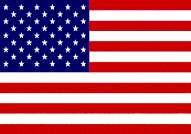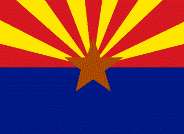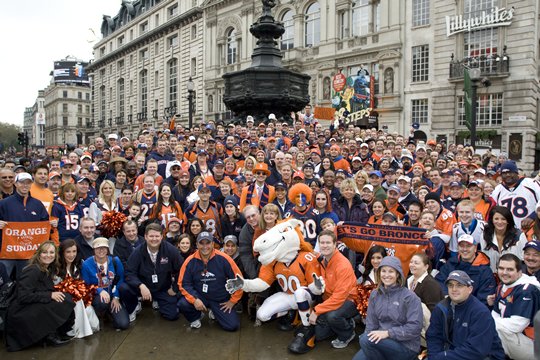On Sunday, December 7th, 1941 the Japanese launched a surprise attack against the U.S. Forces stationed at Pearl Harbor, Hawaii. By planning this attack on a Sunday, the Japanese commander Admiral Nagumo, hoped to catch the entire fleet in port. As luck would have it, the aircraft carriers and one of the battleships were not in port.
(The USS Enterprise was returning from Wake Island, where it had just delivered some aircraft. The USS Lexington was ferrying aircraft to Midway, and the USS Saratoga and USS Colorado were undergoing repairs in the United States.)
In spite of the latest intelligence reports about the missing aircraft carriers (his most important targets), Admiral Nagumo decided to continue the attack with his force of six carriers and 423 aircraft. At a range of 230 miles north of Oahu , he launched the first wave of a two-wave attack.
http://www.fostoria.org/serviceclubs...%20Harbor.html
At 6:00 a.m. on 07 December, the six Japanese carriers launched a first wave of 181 planes composed of torpedo bombers, dive bombers, horizontal bombers and fighters. Even as they winged south, some elements of U.S. forces on Oahu realized there was something different about this Sunday morning.
The Japanese aircrews achieved complete surprise when they hit American ships and military installations on Oahu shortly before 8:00 a.m. They attacked military airfields at the same time they hit the fleet anchored in Pearl Harbor. The Navy air bases at Ford Island and Kaneohe Bay, the Marine airfield at Ewa and the Army Air Corps fields at Bellows, Wheeler and Hickam were all bombed and strafed as other elements of the attacking force began their assaults on the ships moored in Pearl Harbor. The purpose of the simultaneous attacks was to destroy the American planes before they could rise to intercept the Japanese.
Of the more than 90 ships at anchor in Pearl Harbor, the primary targets were the eight battleships anchored there. Seven were moored on Battleship Row along the southeast shore of Ford Island while the USS Pennsylvania (BB-38) lay in dry dock across the channel. Within the first minutes of the attack all the battleships adjacent to Ford Island had taken bomb and or torpedo hits. The USS West Virginia (BB-48) sank quickly. The USS Oklahoma (BB-37) turned turtle and sank.
At about 8:10 a.m., the USS Arizona (BB-39) was mortally wounded by an armor piercing bomb which ignited the ship's forward ammunition magazine. The resulting explosion and fire killed 1,177 crewmen, the greatest loss of life on any ship that day and about half the total number of Americans killed. The USS California (BB-44), USS Maryland (BB-46), USS Tennessee (BB-43) and USS Nevada (BB-36) also suffered varying degrees of damage in the first half hour of the raid.
There was a short lull in the fury of the attack at about 8:30 a.m. At that time the USS Nevada (BB-36), despite her wounds, managed to get underway and move down the channel toward the open sea. Before she could clear the harbor, a second wave of 170 Japanese planes, launched 30 minutes after the first, appeared over the harbor. They concentrated their attacks on the moving battleship, hoping to sink her in the channel and block the narrow entrance to Pearl Harbor. On orders from the harbor control tower, the USS Nevada (BB-36) beached herself at Hospital Point and the channel remained clear.
When the attack ended shortly before 10:00 a.m., less than two hours after it began, the American forces had paid a fearful price.
Twenty-one ships of the U.S. Pacific Fleet were sunk or damaged: the battleships USS Arizona (BB-39), USS California (BB-44), USS Maryland (BB-46), USS Nevada (BB-36), USS Oklahoma (BB-37), USS Pennsylvania (BB-38), USS Tennessee (BB-43) and USS West Virginia (BB-48); cruisers USS Helena (CL-50), USS Honolulu (CL-48) and USS Raleigh (CL-7); the destroyers USS Cassin (DD-372), USS Downes (DD-375), USS Helm (DD-388) and USS Shaw (DD-373); seaplane tender USS Curtiss (AV-4); target ship (ex-battleship) USS Utah (AG-16); repair ship USS Vestal (AR-4); minelayer USS Oglala (CM-4); tug USS Sotoyomo (YT-9); and Floating Drydock Number 2.
Aircraft losses were 188 destroyed and 159 damaged, the majority hit before they had a chance to take off. American dead numbered 2,403. That figure included 68 civilians, most of them killed by improperly fused anti-aircraft shells landing in Honolulu. There were 1,178 military and civilian wounded.
Japanese losses were comparatively light. Twenty-nine planes, less than 10 percent of the attacking force, failed to return to their carriers.
The Japanese success was overwhelming, but it was not complete. They failed to damage any American aircraft carriers which had been absent from the harbor. They neglected to damage the shoreside facilities at the Pearl Harbor Naval Base, which played an important role in the Allied victory in World War II.
American technological skill raised and repaired all but three of the ships sunk or damaged at Pearl Harbor (the USS Arizona (BB-39) considered too badly damaged to be salvaged, the USS Oklahoma (BB-37) raised and considered too old to be worth repairing, and the obsolete USS Utah (AG-16) considered not worth the effort).
Most importantly, the shock and anger caused by the surprise attack on Pearl Harbor united a divided nation and was translated into a wholehearted commitment to victory in World War II.
http://www.history.navy.mil/faqs/faq66-1.htm
Casualties:
Civilians: 68 KIA, 35 WIA.
US Marine Corps: 109 KIA, 69 WIA.
US Army: 218 KIA, 364 WIA.
US Navy: 2,008 KIA, 710 WIA.
TOTAL: 2,403 KIA, 1,178 WIA









 Reply With Quote
Reply With Quote

















 to these brave men and women
to these brave men and women





